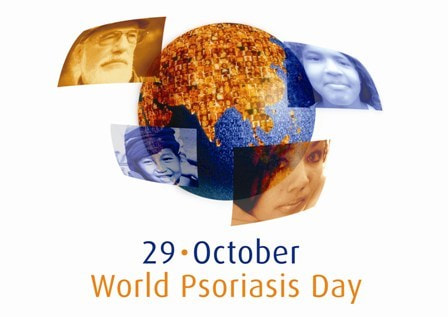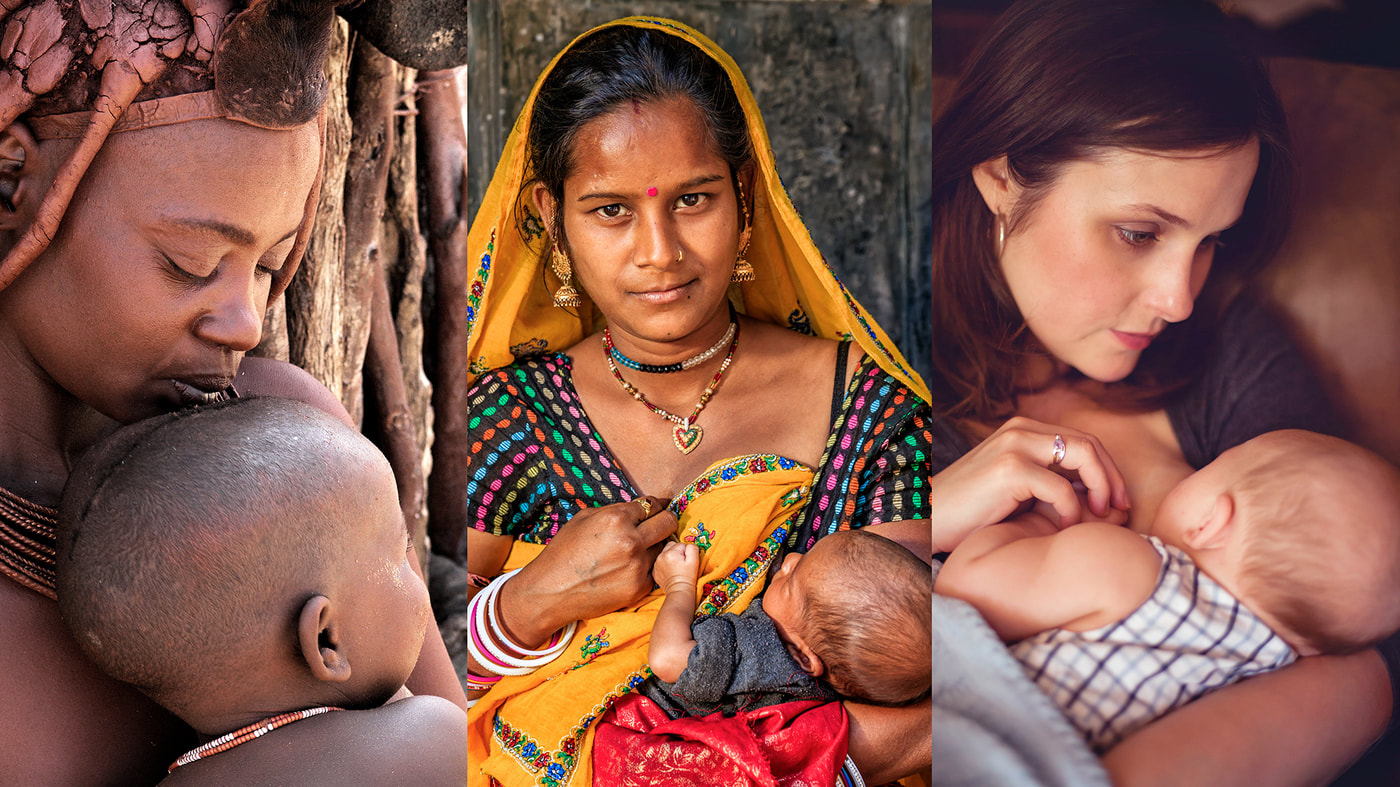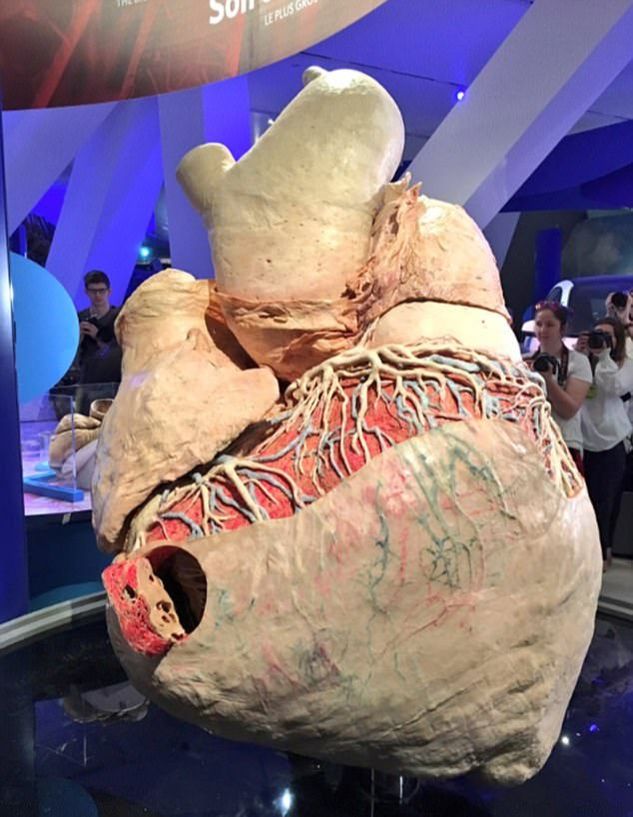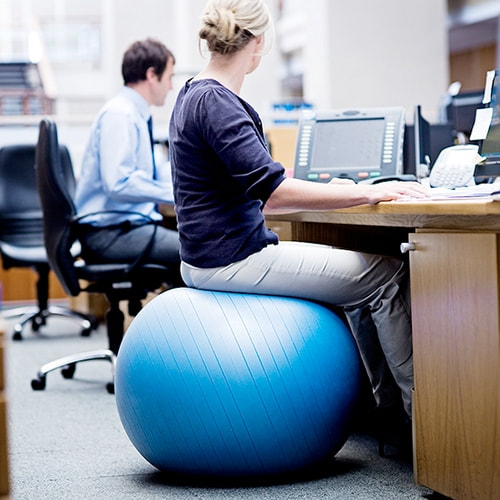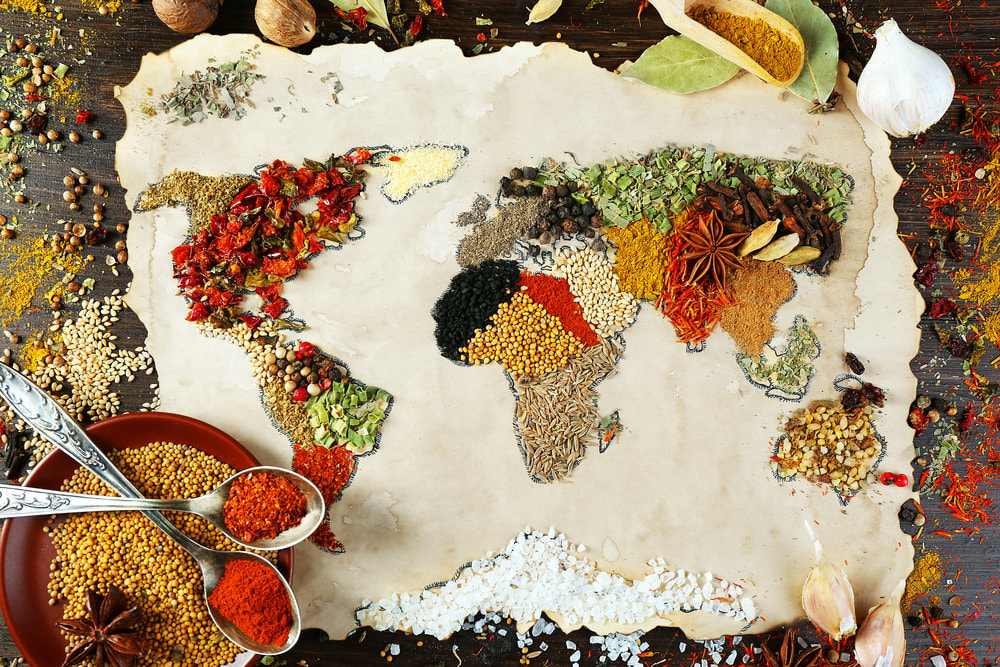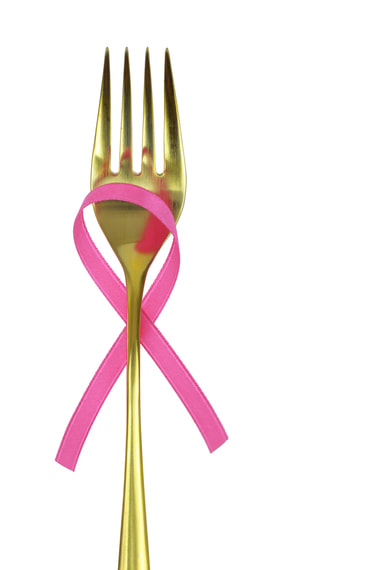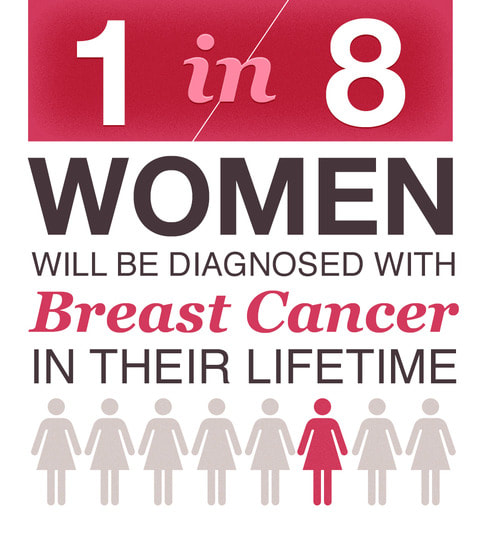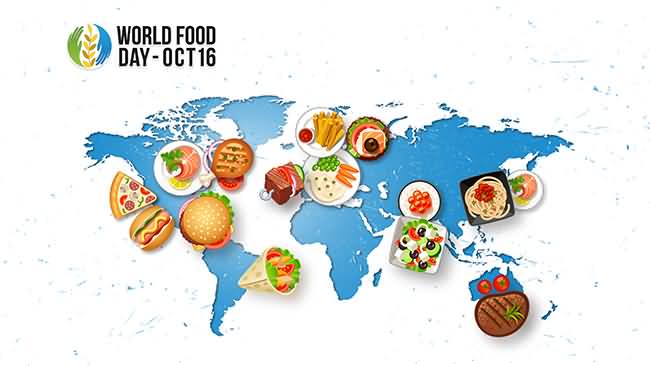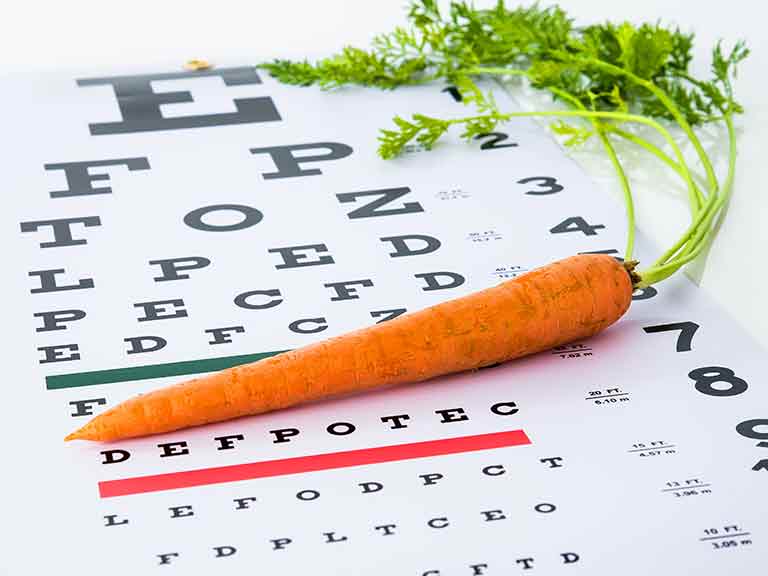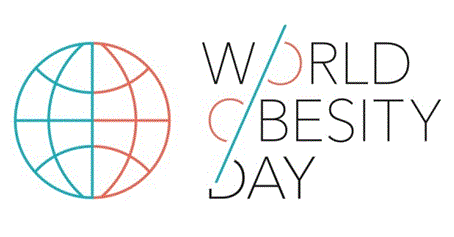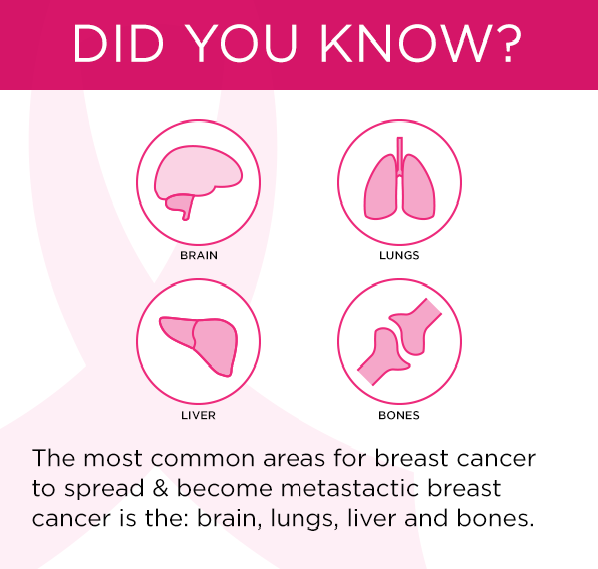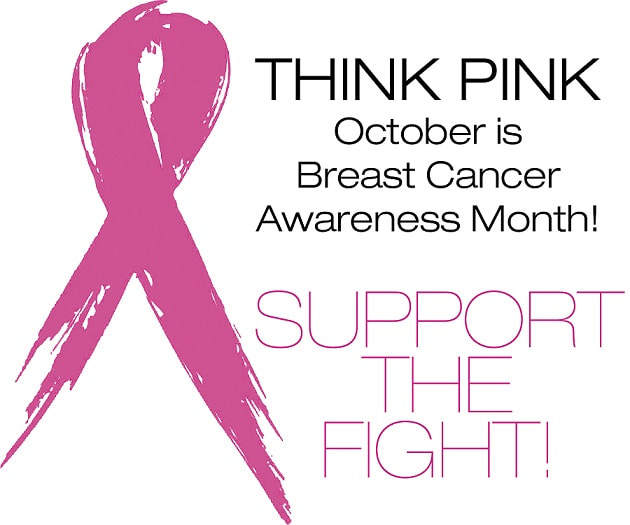|
Kannada Rajyotsava or Karnataka Formation Day is celebrated on November 1st every year. The entire state wears a festive look on this day as the unofficial red and yellow Karnataka flags are hoisted across the state in multiple places. This day is celebrated with fanfare by Kannadigas residing all over the world.
Karnataka is the proud owner of introducing foods such as Bisi Bela Bath, Masala Dosa and Rava idli to the world and its cuisine is one of the oldest ones in the country. Ragi Mudde, a simple meal eaten in the homes of farmers in Karnataka, occupies a prime place in fine-dining restaurants across the state. Let’s look at some of the famous dishes across Karnataka:
World vegan day is celebrated on November 1st every year. What started as a day evolved into a week (World Vegan Week) & now we celebrate it during the entire month (World Vegan Month). As a vegan you might have to bear the false opinions, statements & recommendations from anyone who is not one. You friends might think you eat only spinach, you mom might think you eat only tofu, the society might think you live on granola bars and meat eaters might think you graze on grass, just like a cow, but what you actually eat as a vegan is far away from these convictions. Common, vegans are also just like any other normal human living in this earth!
Who are Vegans & What Do They Eat? Vegans are people who eat a plant-based diet excluding all animal foods such as meat (including fish, shellfish and insects), dairy, eggs and honey as well. They embrace veganism which is a way of life that excludes all forms of exploitation of, and cruelty to, animals for food, clothing or any other purpose. So, what only do vegans eat? A great deal of food! Fruits, vegetables, nuts, grains, seeds, beans and pulses are an indispensable part of a vegan’s diet and you can make endless varieties of dishes from these foods- from pizzas to cakes, curries to pastries, the list of foods that can be prepared with plant-based ingredients is endless. Why Go Vegan? Mostly, people choose veganism to prevent animal exploitation and avoid using animal-based products too. But, of late more and more people are choosing plant-based foods as they are rich sources of protein, iron, calcium, vitamins and minerals. The plant-based sources of these nutrients are low in saturated fat, high in fiber and rich in antioxidants that help reduce the risk of world’s greatest health issues such as obesity, heart disease, diabetes and blood pressure. Meat and other animal products affect the environment massively- right from the grains required to feed animals to transportation and other processes involved. Whereas, minimum quantities of water are required to sustain a vegan diet impacting the environment in the minimal way possible. Finally, plant-based eating is the most sustainable way of feeding the human fraternity. Being a vegetarian, which includes eating dairy and eggs, is not sufficient as millions of cows are slaughtered for decreased milk production and chicks are killed for eggs. Studies indicate that growing plant-based foods requires only a third of the land needed for growing animal-based foods. Almost 3.5 billion humans can live off the food fed to livestock. Our land and water resources have almost exhausted and we do not have enough to feed the growing population an animal-based diet. Break the Myths People have the notion that animal products like milk and meat are necessary for a well-balanced healthy diet. But, a properly planned plant-based diet can fulfill all the nutrient requirements needed by our body. Switching over from an animal-based to a plant-based diet can be taxing and needs proper nutrient planning. A registered dietitian nutritionist at www.firsteatright.com can help you plan a well-balanced plant-based diet to achieve daily required nutrition levels. Vegans eat only raw veggies; Vegans lack proper protein nourishment; Following veganism will empty your wallet; All vegans are social activists who work for PETA or other such organizations-Debunk such myths by living as a thriving vegan. Reduce The Risk of 13 Types of Cancer with ExerciseIt is better to prevent cancer rather than curing it. Studies prove that it is possible to reduce the risk of getting cancer by as much as 42% with as little as 10-minute exercise sessions a few times in a day. Sadly, not even 50% of the world population follows this exercise schedule to benefit these advantages. Educating people, creating awareness and providing people with a clear path can help them take the right step in making a positive change needed for overall well-being.
Exercise is good for health, good for mind and what not? A new study has found exercise to lower the risk of 13 specific types of cancer. While earlier studies proved exercise to benefit the reduction of colon, breast and endometrial cancers, recent findings prove it to be beneficial for esophageal, liver, stomach and kidney cancers, cancers of the neck, rectum, bladder and myeloid leukemia. Exercise helps to reduce cancer risk by lowering hormone levels (e.g., estrogen, which lowers breast and endometrial cancer risk), helping body better regulate insulin levels and lowering inflammation. How Much Physical Activity is Good Enough? You need not spend hours together at the gym or run marathons to keep yourself out of cancer risk. Involving yourself in 150 minutes of moderate-intensity physical activity or 75 minutes of vigorous intensity physical exercise helps to reduce cancer risk. Your hobby activities such as gardening, dancing, swimming and golfing (without a cart) or every day activities such as climbing the stairs, walking or getting up from a desk are examples of moderate-intensity activities. Aerobic physical activity should be performed for at least 10 minutes, spread throughout the week. Children and adolescents should involve themselves in at least 60 minutes of physical activity daily, moderate or vigorous intensity. Vigorous-intensity activities, muscle-strengthening and bone-strengthening activities should be done at least thrice a week depending on the child’s/ adolescent’s convenience. Physical activity is beneficial in the case of cancer survivors too in different aspects: weight gain, quality of life, cancer recurrence or progression and diagnosis. When people realize their control over health, it can encourage them to adopt a healthy lifestyle. This study should be a definite motivation to a person to exercise more, be it walking, cycling, swimming or any activity the individual loves to do. Some individuals only need a helping hand to make them feel comfortable in exercising. A nutritionist/dietitian at www.firsteatright.com is the right person to help you maintain a healthy weight to prevent cancer or sustain the survival along with a healthy dose of physical activity suiting the person’s body conditions. India is at the Brink of An Obesity TsunamiThis week is Obesity Week, happening between October 29th and November 2nd. It is a unique, international event focused on the basic science, clinical application, surgical intervention and prevention of obesity. It brings together world-renowned experts in obesity to share innovation and breakthroughs in science unmatched around the globe. Surgeons, clinicians, physicians and scientists comprise the major lot of the attendees with students, assistant professors, administrative people and other people constituting the rest of the population.
Facts on Obesity/ Overweight Abnormal or excessive fat accumulation that posts health hazards is defined as obesity/overweight. Body mass index (BMI) is a measure of obesity and is calculated using a person’s weight (in kilograms) divided by the square of his or her height (in meters). While a person with a BMI of 25 is considered to be overweight, people with a BMI equal to or greater than 30 are said to be obese. Obesity has become an epidemic, with at least 2.8 million people dying each year because of being obese or overweight. Generally known to prevail among high-income countries, obesity has affected middle- and low-income countries as well.
Tips To Stay Safe & Healthy During HalloweenHalloween is the perfect occasion to dress up, go out, party and have fun! Ghosts and goblins, witches on broomsticks, pumpkins, candies and spiderwebs-yes! it’s Halloween. Indians are adopting the Halloween Day celebrations, which falls on October 31st every year, into their culture; schools are organizing Halloween Day celebrations and individuals are embracing Valentine’s Day or even New Year which are not prevalent in the Indian culture. There is no harm in adopting Western culture as far as it’s positive and fun.
Halloween Day is celebrated in many countries as a remembrance of the dead, including the saints (also known as the hallow, which explains the reason for the name Halloween Day), martyrs and all the faithful departed. Celebrations include trick-or-treating, attending Halloween costume parties, making jack-o-lanterns from pumpkins, narrating scary stories and watching horror movies. While the festival started initially as a day dedicated to praying for the dead and a belief existed that on the day of Halloween the boundaries between the world of the living and the dead became blurred, it has now become a festival where kids wear costumes and visit neighbors for ‘trick or treating’. Trick Or Treating The trick lies in choosing smart candies to give children during trick or treating. During this time, children go from house to house asking for treats such as candy or warning them of some mischief on the house owner or the property (trick) if no treat is given. Make a candy bowl of some of the items given below which helps you to feel good when serving and is also healthy for the children.
Teal Pumpkins Teal-colored pumpkins are in vogue this year which indicate visitors that you have nut-free and non-candy items to offer kids. If children in your community are planning for a jack-o-lantern, keep it a point to never allow small children to carve pumpkins. While children can draw a face with markers, parents can do the cutting part. Try to replace candles with flashlight or glow stick to light the pumpkin. An adult should supervise whatever is done by the kids. They should also help kid place the pumpkin on a sturdy surface away from inflammable objects or curtains. Children should be preached on the dangers of placing the pumpkin on a path or porch where visitors might keep coming and going. In India, we celebrate the Halloween day mainly for the fun quotient. Kids love roaming around their locality in black-colored costumes, hats, black-painted faces etc. They enjoy spending time with friend making jack-o-lantern pumpkins and trying to scare each other. The adults in the community can distribute sweets (as mentioned above) and candies in the evening to boost the spirits of these kids and also try to involve them in making homemade candies or treats. Get out, do something different and have fun dressing up-that’s the whole ideology behind Halloween. Participate in the Halloween magic show happening at Unnati Library, Sarjapur, have a mind-blowing Halloween dinner at The Ritz Carlton, Central Bengaluru or enjoy some thrilling music happening in multiple places across the city that sends chills down your spines. Today is World Psoriasis Day, a day dedicated to the 125 million people living with psoriasis worldwide. The International Federation of Psoriasis Associations (IFPA) sets a theme every year and the theme for 2017 is “Psoriasis Inside Out”. In line with the theme, this year is all about showing all aspects of the disease and giving a face to psoriasis and psoriatic arthritis.
A Short Insight into Psoriasis Psoriasis is a chronic disease where the overactive immune system sends out signals that cause inflammation in the body and amplify the growth of skin cells. It is a skin disease that causes red, scaly skin that may feel painful, swollen or hot. While scientists believe that at least 10% of people inherit one or more of the genes that can cause psoriasis, only 2-3% of this population develops the disease. According to researchers, this difference is due to the fact that, to develop psoriasis an individual should have a combination of the genes that cause psoriasis and should also be exposed to external factors called as “triggers.” Some effects of psoriasis:
Psoriasis can be hard to diagnose as it looks like any other skin disease. It is better to get in touch with your physician if you have any doubts. Your doctor might suggest creams, prescription drugs, ultraviolet light therapy, shots or a combination of these treatments. Individuals with psoriasis feel powerless many-a-time and think of controlling their diet to control their life and fight against the disease. But does diet modification practically help in reducing the impact of this powerful disease? Although there is no conclusive evidence on the impact of diet on psoriasis, patients bet that they feel better and healthy when they stay on a healthy weight and balanced blood sugar & cholesterol levels-even when these do little for the skin and joints. Most people follow these nutrition tips to combat psoriasis:
Stroke is the #2 cause of death worldwide and the #1 cause of adult disability accounting for 1 in 10 deaths and resulting in a total of 44 million years of healthy life lost each year. It can attack any person at any age and impact survivors, family, friends, workplaces and communities. October 29th is ‘World Stroke Day’ and joining hands one day together, on this day (Oct 29), can help fight stroke 365 days a year.
What is Stroke? Stroke is a disease that affects the arteries leading to and within the brain. When a blood vessel carrying oxygen and nutrients to the brain is either blocked by a clot or ruptures (or bursts), it results in stroke. When this happens, a part of the brain is denied of blood (and oxygen) and the brain (including the brain cells) dies therefore. Brain is the power house of various body functions. When stroke occurs, blood flow cannot reach the region that controls a specific body function and this body part becomes dysfunctional. Ischemic (caused by clot) stroke, hemorrhagic (caused by rupture) stroke and transient ischemic attack (mini stroke caused by a temporary blockage) are the three types of stroke. Although 1 in 4 stroke survivors is at risk for another stroke, the good part is that up to 80% of second clot-related (ischemic) strokes may be preventable. More than 90% of strokes are linked to 10 key risk factors which include high blood pressure, smoking, diabetes, diet, physical activity, obesity, high blood cholesterol, carotid artery disease, peripheral artery disease, atrial fibrillation, other heart disease and sickle cell disease. On World Stroke Day this year the focus is on preventing stroke, raising awareness of stroke risks and demonstrating the steps all of us can take to prevent stroke. F.A.S.T The sooner we treat stroke, the better it is for the patient. F.A.S.T is how we learn the warning signs of stroke: F-Face drooping A-Arm weakness S-Speech difficulty T-Time to call ambulance Stroke can affect a person on your street, workplace, store or shop. If you are equipped with the ability to recognize the warning signals and call an ambulance, it could save a life or make the difference between total recovery and long-term disability. Remember, stroke is mostly treatable-it depends on getting the right treatment at the right time. It’s Possible to Prevent Stroke It’s mostly in your hands to reduce the risk of stroke:
Act Right Now! Some person in some place dies from stroke every six seconds and two-thirds of individuals who have suffered from stroke live in the low- and middle-income countries where health systems and nutritious food are challenging and limited. ACT NOW because:
Anyone would love their life to be filled with harmony and physical well-being. But sadly, most of our lives are not so successful and we feel that we have lost control at some stage of our life. There might be times where we feel elated and in total authority of the things happening around, but some other times we struggle to fulfill different responsibilities, having highs and lows in life. Time is one factor that is constantly being desired for. Most of the individuals failing to fulfill their weight loss promises, blame it on time. People living in this world are unhappy, stressed, busy and physically unwell. Instead of being frustrated and criticizing time for all these aspects in your life, it is better to do something more productive, for instance, increasing physical well-being, being happier in life and finding things that help you relax. Wellness Quotient Your mind, spirit and body should work in coordination for optimal well-being and health. Continuously readjusting these elements for a balanced body happens in every individual and is a life-long process. While working on this, we can look out for options to qualify ourselves to deal with these readjustments in a better way. Intelligence Quotient Most of us have knowledge about the broader aspects of wellness – physical, spiritual and mental/emotional – which helps us direct our goals in the right direction to maximize physical well-being. Understanding Quotient While we learn all things theoretically, applying this in our practical lives after understanding it thoroughly is where the actual challenge is. Overcoming this barrier is challenging and limits the goal of physical well-being. The Actual Process Following the three “R’s” – reevaluate, readjust and rebalance – modifies physical well-being and helps to achieve maximum wellness. Taking risks, challenges and chances in life is what helps you move on to the next level. Get on board this new journey of life to arm yourself with wellness and strength.
Start your next day with the one goal of living your life to the fullest again. Balancing all elements of life is complex and can be tiresome too. But, when you start implementing your goals, your physical well-being increases, and you start having a positive outlook in life. You feel proud of your achievements and the steps you have taken for bringing a positive change in yourself.
The uterus is a pear-shaped organ where the fetus develops when a woman gets pregnant. Endometrial cancer is the cancer that starts in the endometrium, the inner lining of the uterus. A new study has determined that women who breastfeed their babies for six months are at a lower risk of developing endometrial cancer. The study involved 26,000 mothers sourced from 17 international studies out of which 9,000 had been diagnosed with endometrial cancer. Analysis proved that mothers who breastfed their infants during the first six months were 11 percent less likely to be diagnosed with endometrial cancer in comparison to women who did not breastfeed their infants. Breastfeeding for a longer time (six to nine months) further reduced the risk while there was no extra benefit past the ninth month.
Breastfeeding is beneficial to both, the baby and the mom. While it helps to protect the baby against diseases and fulfills all the nutrient requirements, it helps the mother to shed away the extra kilograms post-pregnancy and helps to bring the uterus back to its pre-pregnancy size. Hence, adding reduced risk of endometrial cancer as one of the benefits of breastfeeding (for the mother) is on the cards. Promotion, support and encouragement of breastfeeding might help to contribute to the prevention of this increasing cancer type. Breastfeeding mothers need a well-balanced diet to provide nutrition to the baby as well as to keep herself nourished and healthy. A registered dietitian nutritionist at www.firsteatright.com can help the breastfeeding mom with a healthy diet plan to fulfill this requirement. While the human heart is typically the size of a fist, the blue whale has the world’s biggest heart. While some claim it to be bigger than the size of a small golf cart or a VW Beetle car, it is actually as big as a Harley-Davidson or a small piano! Being the largest mammal to have ever lived, the blue whale is the proud owner of some of the record-breaking internal organs. Aorta, a major blood vessel for the heart, can accommodate a crawling child inside it. An adult heart is anywhere between 250−350 grams in comparison to the weight of a blue whale heart which is around 200 kilograms. The weight of a blue whale’s heart is around 640 times as much as a human’s heart. A 200-kilogram heart of a 2000-kilogram creature is still pretty big. What would happen when the heart enlarges? It’s terrible to even just imagine it!
Cardiomyopathy is a deadly human disease wherein the heart muscle becomes enlarged, thick or rigid affecting the heart’s efficiency to pump blood around the body. In worst scenarios, the heart becomes weaker and cannot function properly resulting most probably in heart failure. Diabetes, severe obesity, high blood pressure and prolonged alcohol consumption are some common risk factors of cardiomyopathy. The best way to fight this deadly disease is by making a few tactical lifestyle modifications. This includes quitting smoking, losing excess weight, avoiding alcohol, minimizing stress, eating healthy food, sleeping peacefully and getting enough rest. Visit the website www.firsteatright.com to know more on cardiomyopathy and the healthy diet plans that can come to your rescue in preventing the disease. The more you sit, the more you suffer from health consequences. But, most of our jobs require us to sit continuously for long hours. What changes can you bring about to move more often (take a small break every hour, walk around the office after lunch or stretch for some time every few hours) and eat more healthily at work? The Dabbawalla Everyone has got a lunch break during office hours and you cannot force yourself to eat outside food daily. You need to plan your meal for the week during the weekend to avoid last minute preparation chaos. This not only saves you enough money, but also saves your health as restaurant meals are often greasy and sodium-rich. Walk to Work Humans were not designated to sit in one place for prolonged hours. Human body is a dynamic system that needs constant movement which can otherwise result in obesity, diabetes, heart disease, insomnia, headaches and constant back pain. The way you meticulously plan your meetings and work, the same way you can plan your workout too. Research suggests that every person should cover 10,000 steps per day to stay healthy. Try to walk to office. If that is not practical, try to squeeze in three 10-minute work schedules through the day. By the end of day, you would have completed 30 minutes of activity. You can use the restroom in the next floor, climb the stairs to work or place the dustbin farther away from your desk. Although this is nowhere near your total step target, you have at least started responding to health targets. Even getting up from your desk to make yourself a cup of coffee improves overall health.  Stock Healthy Snacks in Your Desk Stock Healthy Snacks in Your Desk Design a Healthy Desk Your co-workers might have an on-the-go candy jar to pop in few candies into the mouth or the vending machine near your floor entrance might want to become your best friend. Chuck these out and carry different fruits with you every day to make a fruit bowl of your choice and don’t leave your cabin at the end of day until you have exhausted the fruits. Stack some healthy snacks such as unsalted nuts, puffed rice or cucumber sticks to fight hunger. Keep a bottle of water by your desk to stay hydrated. People often confuse thirst with hunger and drinking enough water can prevent you from eating unnecessarily. Have a Good Posture
People hunch over computer screens all through the day and neglect their posture which is important for overall fitness. A good posture allows you to breathe more deeply, improves circulation and digestion, gives more space for organs to function and makes us look more confident and composed. Many companies such as Google and Facebook have encouraged their employees to stand and work for better health. Research also shows that sitting on an exercise ball and working increases abs movement by 33%, stimulates circulation, muscle and leg movement and reduces stress. Cut Down Caffeine Intake Caffeine addiction is common in a workplace setting. Small amounts of caffeine can stimulate your brain and increase productivity. But, consuming too much coffee can end up adding increased calories, sugar and fat. Overcaffeinated individuals suffer from serious health consequences as discussed in the website www.firsteatright.com. Estimate your current coffee consumption rates and cut back on the added caffeine intake, if needed. Nearly 1 in 4 people complain of body pain and aches due to long hours of sitting in one place. Such stagnant positions and lack of movement can result in sluggish digestion and lack of energy. It’s the small things that add up and the ideas suggested here help individuals to adopt a healthy lifestyle. Added sugars can affect waistlines and do even more damage when they are paired with the inappropriate food choices. A juicy burger with a chilled soda can do all the wrong things to your health. According to a new study, gulping down a sugary drink with a high-protein meal can increase fat storage in your body.
Sugar-sweetened drinks decrease fat oxidation and including a protein meal along with it can further decrease the oxidation process. Oxidation is the process that promotes the breakdown of fat molecules. Researchers found that about a third of the additional calories provided by the sugary drink was not expelled by the body. For instance, a sugary drink with 15% protein meal decreased fat oxidation by almost 7.2 grams, whereas with a 30% protein meal the oxidation decreased by 12.6 grams. Moreover, this combination also made the individual crave for salty foods until four hours after eating. This sugar−protein−salt combination is deadly and can hamper your nutrition quotient to a great extent. The Study The study involved 27 healthy adults who were made to live inside a sealed room for two days. On the first day they were made to eat two meals that contained 15 percent protein and on the next day they ate two meals with 30 percent protein. Each meal consisted of bread, ham, cheese, potatoes and butter providing 17 grams of fat and 500 calories. Every day, the participants were given a sugary cherry-flavored drink during one meal and a sugar-free cherry-flavored drink during the next meal. According to the study, neither the energy from the drink made people feel satisfied nor were the additional calories expelled from the body because of this energy. The study even suggests that pairing such foods can induce weight gain and preventing people from consuming such food combinations can be an effective weight management strategy. To know more on effectively pairing certain foods and avoid pairing certain other foods to reap health benefit, get in touch with a registered dietitian nutritionist at www.firsteatright.com. The study effectively imparts knowledge on the downside of junk foods. With the rising obesity rates in our country, it is necessary to become aware of such health conflicts and correct them as early as possible to avoid an obesity epidemic. Diet fad obsessions have decreased as people are shifting focus on eating nutritious and clean meals to live healthier (not thinner!). The top 10 foods of 2017 is a standing example of the change in people’s focus from eating foods to lose weight to eating foods to stay healthy. The concept of ‘mindful eating’ is becoming popular as it is a slow and more thorough approach to eating healthy foods. People have also started avoiding processed foods and concentrating more on whole foods such as fruits, vegetables, grains, plant-based nuts, seeds, etc.
Top 10 Foods
Pizza is the anthem of the youth. Children love their cheesy pizzas and adults often indulge in this convenience food for different reasons. This yeasted flatbread, invented in Italy, has become a universal food enjoyed by people all over the globe. Pizza can be categorized both as a “healthy” food and a not-so-healthy food solely based on the preparation method. Understanding this categorization can help you relish this multifaceted meal option more often with less guilt. Vegetables, Spice and All Things Nice The authentic pizza crust is made of white flour or wheat flour and topped with sauces, veggies, cheese, meat and seasonings. Slight variations to the crust and the toppings can make or break the health quotient of any pizza. Crust: Always choose whole-wheat crust or any whole-grain crust option. If these are not available, choose the thinnest crust option to keep starch content in the minimum possible range. Homemade pizza gives you more liberty to use your desired ingredient for the dough. You can choose whole-grain flour and mix few herbs to enhance the flavor of the crust. Individuals allergic to gluten can choose from soy, rice, sorghum, potato or bean flour to make the dough. For more information on gluten-free foods, please visit the website www.firsteatright.com. Sauce: Though tomato sauce contains calcium and the disease-fighting lycopene, it is also high in sodium. Order for low-sodium options (if available) while eating outside and make your own sauce when preparing the pizza at home. The simplest way to make your pizza sauce is to use tomato puree with some oregano and garlic. This way, you get your dose of Vitamin C while avoiding excess sodium consumption. 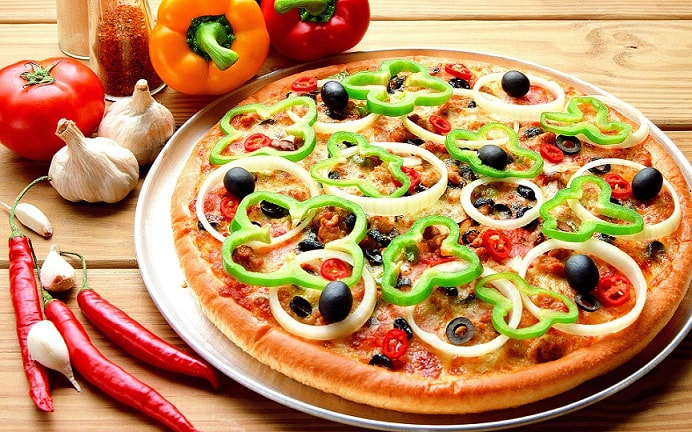 Mouth-watering Pizza Made with Colorful Veggies & Flavored Herbs Mouth-watering Pizza Made with Colorful Veggies & Flavored Herbs Vegetables: Load your pizza with every colorful veggie possible to make it tasty and nutritious. Sprinkle some baby corns, color bell peppers, onions, egg plants, tomatoes, zucchini, pineapples, apples and olives onto your healthy crust. You can even add boiled chick peas, rich in proteins, as a topping. Cheese: Don’t overload the pizza with extra cheese. Use minimum mozzarella cheese and avoid pepperoni or sausage to cut down on the saturated fat content. If you are eating out, request for a minimum-cheese pizza with mozzarella instead of Parmesan. Meats: Preparing a pizza at home helps you skip the high-fat meats and allows you to top the pizza with your kid’s favorite vegetables. While eating out, choose from healthy protein options such as chicken, bacon or beef.
Herbs and Spices: Finally, top the pizza with herbs and spices to make the meal appetizing. Go for fresh or dried herbs such as oregano, basil, rosemary, chives, thyme, savory or parsley. Red chili flakes can be used for the ‘extra spicy’ effect. Whichever maybe the option you choose, the rule of thumb is that one teaspoon of dried herbs is equivalent to one tablespoon of fresh herbs. Though eating out will not allow you to make too many modifications to your pizza, you can prepare your own aromatic pizza with all the nutrition and good health. Most of the toppings are gluten-free and you can choose them liberally. Take extra caution while selecting cheese and herbs for the pizza to ensure that they are gluten free. Pizza can be an excellent meal option for your little one as it contains foods from all the food groups added onto it. Surprise your children with creative pizza recipes that are sure to impress their taste buds as well as satisfy the nutrition quotient. Next time your child wishes for a pizza, you can bet that they would not require Dominos or Pizza Hut to fulfill their desire, but they would be waiting for Mama’s pizza! There is no single superfood or power-packed food that can prevent or cause breast cancer. Researchers advocate the fact that it is possible to curb 9 out of every 100 cancer chances (9%) with diet modifications. It has also been propagated that women who eat a Mediterranean diet with extra-virgin olive oil and mixed nuts are at a reduced risk for breast cancer. This is because, a Mediterranean diet comprises mostly of plant-based foods along with healthy fats. Healthy body weight is another factor which prevents breast cancer. This again can be achieved through healthy diet modifications.
Include These Foods The following foods are prescribed for a healthy diet plan, but these are the ones suggested for breast cancer patients too.
Avoid These Foods 1.Alcohol: Women who consume three alcoholic drinks per week are at a 15% increased risk of breast cancer. It is better to stop drinking alcohol and replace it with other options such as innovative mocktails using edible flowers. 2.Sugar and Trans fat: Processed foods which contain trans fat are sure to increase the risk of breast cancer. Cookies, crackers, donuts, fried foods and pastries are the most popular processed foods which are high in both sugar and trans fat. It is advisable to avoid these foods to prevent breast cancer risk and stay healthy. Along with the above diet modifications, doing physical activity is equally important. Prominent cancer organizations suggest that women who exercise for four or more hours every week are at a decreased risk of breast cancer as 5 out of 100 cancers (5%) can be avoided by maintaining a healthy body weight. Along with the newborn comes ample responsibilities and tasks for the new parents. The first and foremost focus of these parents should be to provide the best possible nutrition care for their children to raise healthy and happy kids.
Exclusive breast-feeding is recommended for the first six months for the best nutrition and health of the infant. From the sixth to the twelfth month, breast-feeding along with complementary foods is suggested. Parents should take utmost care while introducing complementary foods, making the child eat only one new food at a time. For healthy and nutritious complementary foods, please visit the website www.firsteatright.com. When breast-fed, the baby experiences reduction in:
Breast-feeding is not possible in the case of every mom and baby. But, mom–child duos who are compatible with breast-feeding can reap its benefits while the rest can meet a physician or registered dietitian nutritionist and discuss the possibilities of breast-feeding. Diwali, the festival of lights, is all about spreading happiness and joy. People start planning for Diwali weeks or even months in advance. No festival is complete without good food and individuals start making homemade sweets and savories at least a week prior to Diwali to distribute to their near and dear ones. Hot jalebis, fluffy jamuns, badam halwa and rasagollas are a common occurrence in every person’s house. Being a time for indulgence, some individuals tend to overeat during the festive seasons ending up with overpacked calories and health issues as well. There is no need for completely restricting or avoiding all the yummy delights. Make small changes to your diet plan to restrict calorie accumulation.
Hearsay facts about breast cancer cause panic among individuals. Here are certain myths about breast cancer and hard-core facts shattering these myths.
Myth: A lump in the breast immediately implies breast cancer. Fact: Only a small percentage of these lumps are cancerous. But a constant lump in your breasts or any change in the breast tissue needs immediate attention. Consult your physician and go for a test to find out if this lump can/cannot be ignored. Myth: Breast cancer runs in the families. Fact: Although women with a family history of breast cancer are in the high-risk category, almost 90% of the women having breast cancer have no family history of the same and acquire it due to lifestyle and environmental factors. To correct your unhealthy lifestyle practices and eat nutritious food, you can get in touch with a registered dietitian nutritionist at www.firsteatright.com. Statistics prove that, only 5% to 10% of women diagnosed with breast cancer have it because of heredity, due to abnormal genes passed over. Myth: Breast cancer is contagious Fact: Breast cancer is not like cough or cold, where it can be acquired from someone instantly. It is a non-communicable disease which is the result of uncontrolled cell growth of breast tissue. Myth: A mammogram can spread breast cancer. Fact: Mammograms require extremely low quantities of radiation and the risk attached is almost negligible in comparison to its advantages. An annual screening mammography is recommended for women starting from their 40th birthday. Myth: Men are never at risk for breast cancer. It only affects women. Fact: Although breast cancer is present predominantly among the female population, it affects less than 1% of the male population. Around 2,190 men are diagnosed with breast cancer annually and 410 die out of it. Although the percentage is low, men should also get themselves checked periodically for breast cancer risks. The reason for high mortality rate in men is because, awareness among men is low and they are less likely to assume a lump with breast cancer and hence, treatment is delayed. While breast-feeding one baby is a monumental task what about the moms of twins and triplets? Can they effectively breast-feed two or three babies providing them all the nutrients and antibodies that the babies need? The answer is a definite yes. Breast-fed babies have multiple advantages including lower risks of respiratory tract, ear infections, eczema, diabetes, obesity and sudden infant death syndrome (SIDS). Breast-feeding helps the new mom to spend invaluable time with her baby and to lose weight.
Worldwide, exclusive breast-feeding is suggested for the first six month after the baby is born and is recommended to continue at least up to the baby’s twelfth month along with complementary foods. Nursing multiple babies requires increased nutrients consumption along with ample fluids intake. Mothers need to consume an extra 500 calories for every baby they breast-feed. The best sources to acquire maximum nutrition include fruits, vegetables, whole grains, lean protein and fat-free or low-fat dairy to fulfill iron, calcium and other nutrient requirements. Omega-3 fatty acids must be consumed during breast-feeding for optimal brain development. Fish is the main source of these fats and it is recommended to eat fatty fish such as salmon and sardines to fulfill the requirements. A registered dietitian nutritionist at www.firsteatright.com can help you plan your diet chart such that you provide nutritious breast milk to every child of while adding nutrition to your body as well. Although breast-feeding two or three bundles of joy might seem to be daunting, it is practically possible. You face the same challenges as you face in the case of a single child. Check out these tips to make your task a little easier:
Sometimes, the multiples may arrive early and may have problems with digestion. They also find it a problem to latch on and suck properly due to insufficient muscle development. In such situations, it is advisable to express breast milk and feed it from a bottle instead of directly breast-feeding the little one. Premature infants also take a little longer to start on solids as they take more time to develop the chewing motion. Even in the toddler stage, these children have developmental delays that create problems during mealtimes. Parents and physicians can work together to come to identify feeding cues to move the child forward. Numbers don’t matter. How many ever children you are feeding, don’t skip on your nutrition needs, the support of a good lactation consultant, help from your partner and finally patience to help you become successful in your breast-feeding venture. Second Thursday of October is observed as World Sight Day every year to make the world know about blindness and vision impairment. The theme for 2017 is “Make Vision Count.”
Make Vision Count Do you know that 80% of the vision impairments is avoidable (treatable or preventable)? Sadly, around 285 million people worldwide live with low vision and blindness, out of which 39 million people are blind. But the good news here is that, the number of people blind from infectious diseases has decreased tremendously in the past 20 years-thanks to scientific advancements and awareness campaigns. Top causes of visual impairments include refractive errors, cataracts and glaucoma while top causes of blindness include cataracts, glaucoma and age-related macular degeneration. Visual impairments from diabetes and premature birth is preventable and one must take any possible step to avoid it. Also, all causes of avoidable visual impairment should be prevented and managed. Manage Eye Health Ensure to follow the below given tips for better eye health. Eat a Balanced Diet Eating well is the first step to promote eyesight. Nutrients such as omega-3 fatty acids, lutein, vitamins C and E and zinc help to decrease the risk of age-related eye problems such as macular degenerations and cataracts. Eating right helps to stay on a healthy weight decreasing the risk of diabetes and obesity, which are one of the leading causes of blindness in adults. Eat More Of:
Smoking can increase your risk of cataracts and macular degeneration and damage your optic nerve. Get outside help if you are unable to quit smoking by yourself. Take Breaks Between your Computer Work Dry eyes are the main problem nowadays associated with prolonged hours in front of the computer. Other risks include blurry vision, trouble focusing at a distance, headaches and neck/back/shoulder pain. Visit the Doctor Regularly Go for an eye examination at least once a year. This also helps to find diseases like glaucoma which have no symptoms. Some types of glaucoma are hereditary and affect a person just after birth too. For more information on hereditary glaucoma, please visit the website www.firsteatright.com. An ophthalmologist or optometrist is the right person to check your vision. Just as the heart relies on large arteries for oxygen and nutrients supply, our eyes rely on tiny arteries for oxygen and nutrients. So, a diet rich in fruits, vegetables and whole grains is beneficial not only for the heart but for the eyes too. World Obesity Day was launched in 2015 with the goal of stimulating and supporting practical solutions to help people achieve a healthy body weight. The theme for this year’s campaign (2017) is ‘treat obesity now and avoid the consequences later’. This raises the responsibility on governments, health care service providers and philanthropic societies to prioritize investments in tackling rising obesity rates.
Indians are becoming more and more familiar with the terms ‘obesity’ and ‘overweight’ as this disorder is spreading like forest fire worldwide and in India, especially. Obesity and overweight are defined as excessive fat accumulation that may result even in death. Worldwide, obesity has tripled since 1975 and around 1.9 billion adults are overweight (650 million are obese), according to WHO statistics. If the same trend continues, almost 2.7 billion adults will suffer from overweight and obesity by 2025 worldwide. Obesity in children has also increased tenfold in 2016 (124 million) compared to 1975 (11 million). By 2022, more children and adolescents (aged 5-19) will be obese than underweight, if the same trend continues. This calls for some extreme steps to curb obesity and overweight. How is Obesity Measured? There are several methods to measure excess adipose tissue and the Body Mass Index (BMI) is the most common among them. BMI is a simple index of weight-for-height used to classify overweight and obesity. Adults having a BMI greater than 30 are said to be obese. What Causes Obesity & Overweight? An increased intake of energy-rich foods high in fats and sugars and increased physical inactivity are the two main reasons for this obesity epidemic. We are exposed to umpteen junk foods that contain empty calories with no nutritional value. Burgers, French fries, pizzas and varieties of sweets and chocolates have invaded the supermarkets and it has become almost impossible to stay away from these foods. Our sedentary forms of work, urbanization and easy transportation facilities have decreased the physical strain experienced by individuals but have increased the physical health problems greatly. Low socioeconomic status is also a risk factor for obesity. Studies also prove that child and adolescent obesity rates are accelerating faster than ever in low- and middle-income countries compared to developed countries. Effects of Obesity & Overweight The risk for noncommunicable diseases such as cardiovascular diseases, musculoskeletal disorders, diabetes, some cancers and even premature death increases with rise in BMI values. What is the Solution? Overweight and obesity are preventable. A change in lifestyle greatly affects obesity. The more active your lifestyle is, the more minimal is the chance of obesity in your life. Some important lifestyle modifications include:
|
AVOID FRAUD. EAT SMART.+91 7846 800 800
AuthorDietitian & Nutritionist Dr. Nafeesa Imteyaz. Archives
July 2024
Categories
All
Dr. Nafeesa's Blog @blogspot |
- Home
- Written Testimonials
- Consult
- Clinics
- Blogs
-
Diet & Nutrition
- Diabetes Reversal
- IVF IUI not needed for PCOS PCOD Infertility
-
Medical Nutrition
>
-
Disease & Conditions
>
- Infertility | PCOS
- Diabetes Mellitus
- Cholesterol
- Hypothyroid
- Kidney Problems
- Hypertension
- Cardiovascular Diseases
- Liver Diseases
- Gastro intestinal disorder
- Cancer
- Metabolic Disorders
- Orthopedic Disorders
- Eating Disorders
- Dietary Recall
- Weight Record Filled By Clients
- Online Payment Transaction Details
- Online Clients Weight Check Form
- Our Program Package Service Charges
- Weight Record 2017 Clients
- Measurements sent by Clients
- Terms & Conditions Of Payment
- Thanks. Your Form is Submitted
- Video Testimonials
- Lifestyle & Wellness
- Lifestyle & Wellness Blog
- Allergy & Intolerance
- Weight Loss / Gain
- Weight Loss / Slimming Blog
-
Disease & Conditions
>
- Life Cycle Nutrition >
- Sports Nutrition >
- Integrity in Nutrition
- Knowledge Centre
© COPYRIGHT 2022. ALL RIGHTS RESERVED. FRST HEALTHCARE PVT LTD.
Dr. Nafeesa Imteyaz of First Eat Right clinic, is the Best Dietitian Nutritionist in Bangalore. Best Dietitian Nutritionist in Pune. Best Dietitian Nutritionist in Hyderabad. Best Dietitian Nutritionist in Chennai. Best Dietitian Nutritionist in Mumbai. Best Dietitian Nutritionist in Delhi. Best Dietitian Nutritionist in Kolkata.






